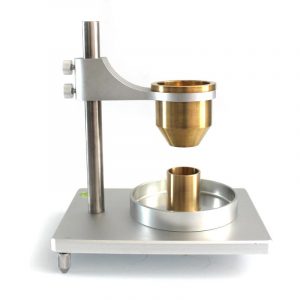What is a Hall tachometer?
Hall Flow Meter is a kind of equipment used to measure the flow of powder, especially suitable for the flow test in powder metallurgy and granular material industry. It evaluates the flow properties of a powder by measuring the time it takes for it to flow out of a particular device. The following is the working principle of the Hall tachometer and a table of five general technical parameters:

How it works
The operating principle of the Hall tachometer is based on the relationship between the time of free flow of the powder from the device and its flow properties. The powder is placed in a specially shaped funnel, and a control valve at the bottom is opened to allow the powder to flow out of the funnel. By timing the time it takes for the powder to completely flow out of the funnel, the flow properties can be assessed. A shorter outflow time indicates better flow performance, while a longer outflow time indicates worse flow performance.
What is a Hall tachometer?
Table of general technical parameters
Description of technical parameters
Test method The test method used in Hall tachometers, such as ISO 4490 standard or other specifications.
Outflow time range The range of outflow times that can be measured by a Hall tachometer, usually in seconds.
Maximum sample volume The maximum sample volume that a Hall current meter can accommodate, usually in grams (g).
Repeatability The range of test repeatability or consistency of results of a Hall tachometer, usually expressed as a percentage.
Material The main construction materials of the Hall current meter, such as stainless steel, plastic, etc.
* Technical parameters may vary with different Hall tachometer models and manufacturers. The parameters in the above table are only examples, the actual Hall tachometer may have other parameters or the specific values are subject to change.
